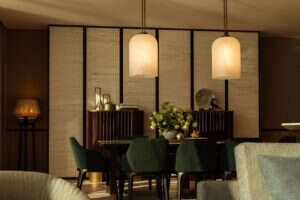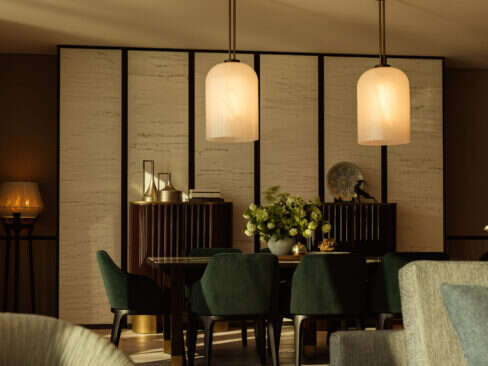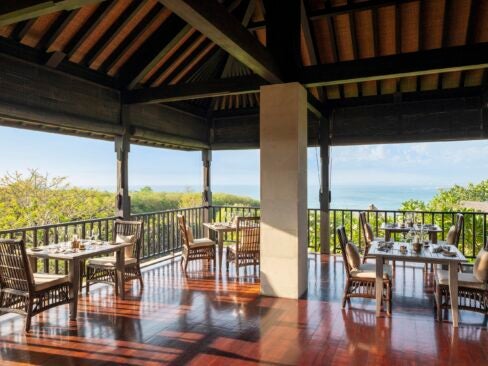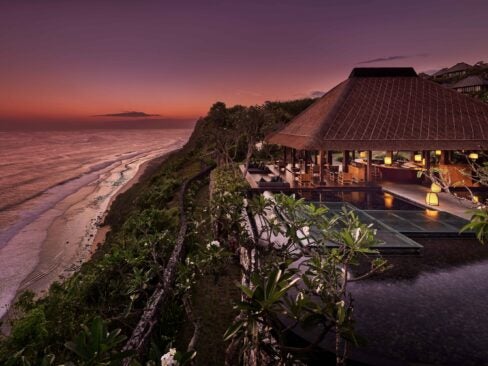
Wienerschnitzel is as Austrian as a plate of fish and chips–David Beckham’s favorite food–is English.
Just as the Scots and the New Zealanders also claim the best fish and chips, however, so do some Germans and Swiss lay claim to the battered veal.
If anything, Italians can compete in the battered veal stakes, but theirs often comes on the bone and it is flatter. For Wienerschnitzel in its home base, the gal had to go to Vienna, and she settled, first of all, on the Hotel Bristol.
There, in the elegant Korso restaurant, she learned that the veal is panfried, its coating of egg, flour and breadcrumbs rises magnificently and it must be served immediately
The Bristol, a Luxury Collection hotel right across Kärntnerstrasse from Vienna’s magnificent Opera House, is, interestingly, now owned by the Elisabeth Gürtler Foundation (Elisabeth Gürtler and her family have a significant empire that includes the Sacher hotels here and in Salzburg, the Sacher cafés and worldwide sales of sachertorte cakes – and she, privately, heads Vienna’s legendary Spanish Riding School).
She and her family are spending a not-small fortune upgrading the Bristol, a classic hotel built in 1892 and, in some respects still looking historic. But now they have brought in Pierre-Yves Rochon, the designer who perhaps best understands blending with history.
I was first person to stay in one of ten new suites created out of the hotel’s former Sirk restaurant, with that view of the Opera House. Taking suite 36 as an example, thanks to Rochon it looks so plausibly Art Deco it is difficult to realise it was only formed, and finished, January 2013.
All of 760 sq feet, it has floor to ceiling windows in the bedroom and adjacent round-ended living room. Golden and taupe colours, lots of lacquer woodwork, parquet flooring with a golden and black antique rug, and a simple five-arm black chandelier all show Rochon’s simplistic, and elegant, style.
He has set several black and white boxes around the two rooms, and filled wall shelves with colour-coordinating sculptures. This is really the type of place one would like to have at home.
I did leave the suite, to walk along Kärntnerstrasse to the Dom, just in time for some magnificent cathedral singing there. Along the ten-minute walk is some of the world’s best shopping, with two gigantic Swarovski stores (what do people do with all these crystals?) and every top retail brand you can think of.
The second biggest Louis Vuitton shop, anywhere, is rumoured just to have opened… What is it about Vienna? One clue is the number of flights between here and Eastern Europe, to bring in all the necessary shoppers and their endless roubles.
After trekking outside, I headed for indoor exercise, like up the main staircase to the fifth-floor eyrie that is the gym. Work out in this tower room, round with a square room on the side, and then head back to suite 36 and you have done over 280 steps, taking up and down into account.
Along the way, at one floor, there is a splendid photo of the most-painted Austrian, Emperor Franz Joseph (the most famous one is probably in the Bristol’s sibling hotel, The Imperial, just across Kärntner Ring – in that painting, the toes of his shoes follow your eye as you walk past, similar to the supposed movement of the Mona Lisa’s eyes). Here he is on horseback, suitably for the owner of what is now, with the ten new rooms, a 150-room palace.
Down below ground, Elisabeth Gürtler, her family and her designer have had the brilliant idea of turning meeting rooms into a Garden Level. Meet down here and you are ‘looking out’ at fantastic scenic views, with daylight glow that can be turned to dusk level if your meeting goes on too long.
This seems to be one of the most beautiful events areas ever. One room is oval, and has faux black and gold pillars, with walls completely covered, as do some of its neighbours, in mushroom-painted classical views. The ideal venue for a luxury hotel wedding or other celebration, or even a meeting of Austrian bankers or whatever.









